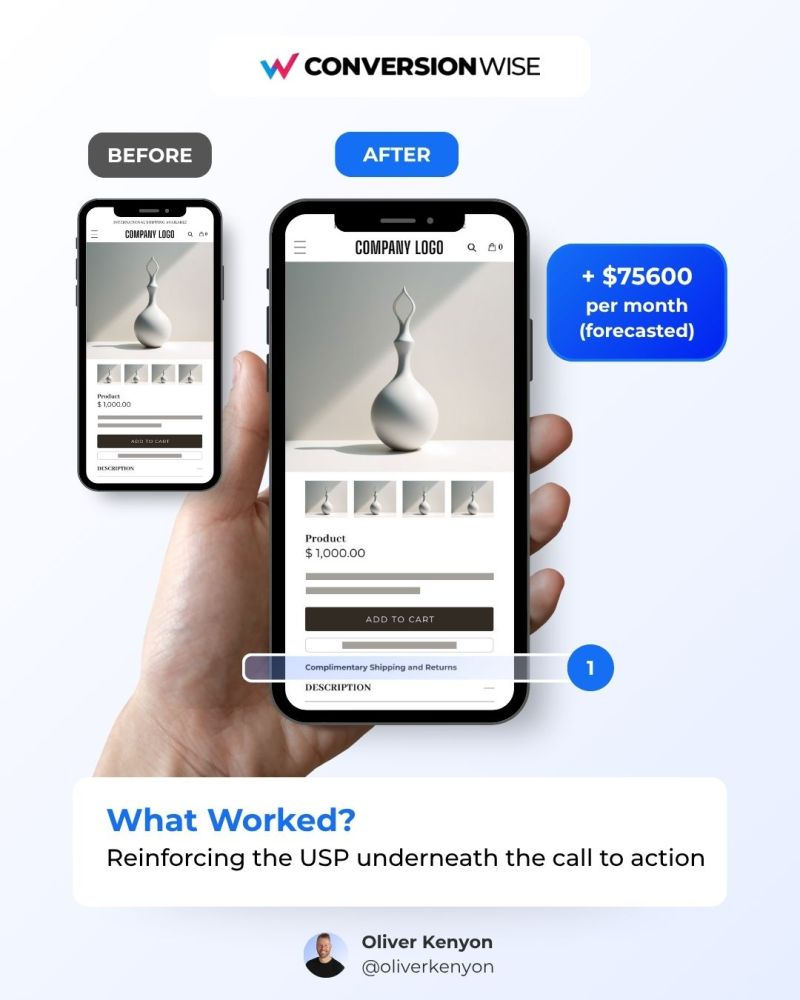The thumb is hovering over the buy button…
What’s the last nugget of info that gets the click?
Is it right next to the button?
It probably should be 👇
Added a USP bar under the Add to Cart button to communicate value without clutter.
The Results:
$75,600 per month
$907,200 per year (forecasted)
Significant lift in conversion rate and add-to-cart actions
via Oliver Kenyon

Comprehension debt is the new technical debt
Arvid nails the dangers of vibin' with AI
when we don’t comprehend what the system does anymore. We don’t understand it because we never built the understanding in the first place.
What happens when you need to adjust your strategy or codebase? If the answer is going back to your AI, then that’s where the value is created.
Don’t use AI as a replacement (at least for your value-add activities), use it as an accelerant.
I like these 6 searcher archetypes from Yext:
- The Creator: Uses AI for ideation and content generation.
- The Explorer: Relies on AI to go deep, discover, and expand.
- The Price Shopper: Seeks deals, comparisons, and quick decisions.
- The Social Proof Seeker: Prioritizes reviews and recommendations.
- The Traditionalist: Trusts conventional engines for structured, factual answers.
- The Accidental Searcher: Starts from social or passive browsing, then acts.
The Traditionalist is older while the Accidental Searcher is younger.
How does your audience discover?
Vibecession tea leave reading
Economists say:
median forecasts for economic growth for 2025 and 2026 have been revised upward…still expect tariffs to be a drag on activity
&
look for the Federal Reserve to lower its interest rate target by another quarter of a percentage point by year-end, followed by three-quarters of a percentage-point reduction in 2026
&
[inflation] forecasted to be 3.0% from the fourth quarter of 2024 to the fourth quarter of 2025…projected to cool to 2.5% by the end of 2026
People are spending, but don’t feel good about it
via NABE
Search keeps splintering and everything is omnichannel
Just 11% of U.S. consumers trust the first tool they use when searching online.
double-check or expand their search elsewhere “because they don’t trust the first answer”
The funnel is dead.
Linear journey? Who dat?
Own your brand. Stay aligned.

